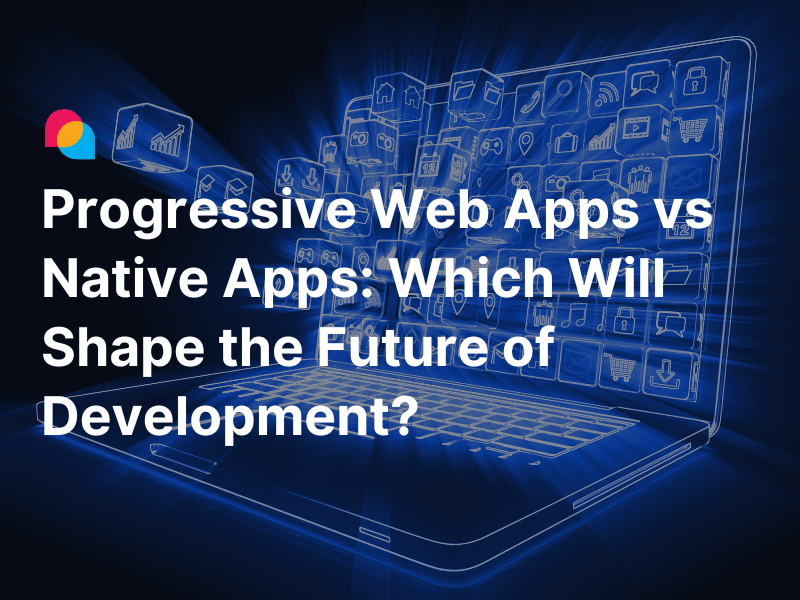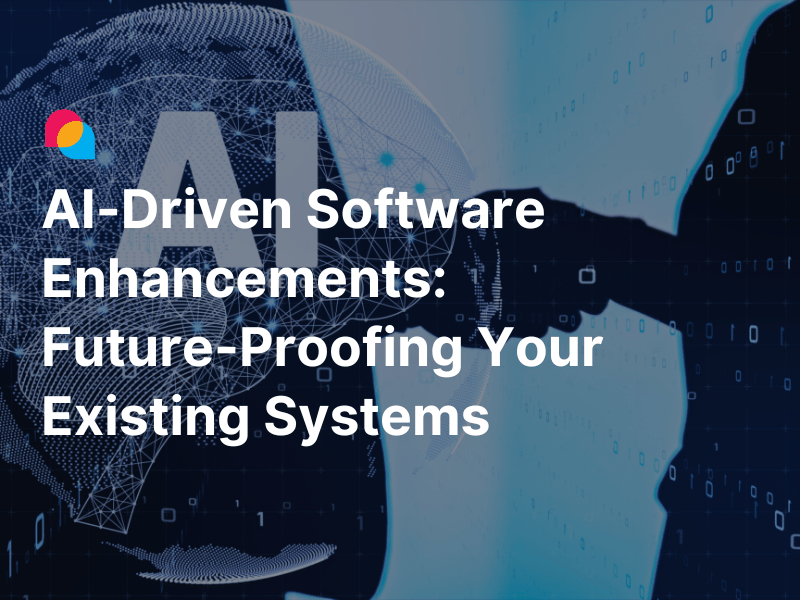Businesses are continually exploring architectural paradigms that offer scalability, cost-efficiency, and performance. Two prominent contenders in this arena are serverless computing and microservices architecture. Understanding the nuances of "serverless vs microservices" is crucial for organizations aiming to align their technological infrastructure with business objectives.
Understanding the Debate on Serverless vs. Microservices
The evolution of cloud computing has revolutionized how applications are developed, deployed, and managed. Traditional monolithic architectures, characterized by their unified codebases, often grapple with issues of scalability and maintainability. In response, modern software architectures like microservices and serverless computing have emerged, each offering distinct advantages.
Microservices architecture decomposes applications into independent, loosely coupled services, each responsible for a specific business function. This modularity facilitates agile development and continuous deployment. Conversely, serverless computing abstracts infrastructure management, allowing developers to focus solely on code execution. In this model, cloud providers dynamically allocate resources, and billing is based on actual usage, enhancing cost-efficiency.
Selecting the appropriate architecture is pivotal, as it directly impacts scalability, operational costs, and performance. A misaligned choice can lead to increased complexity and expenses. Therefore, a thorough evaluation of both serverless and microservices architectures is essential to determine the best fit for a business's unique requirements.
What is Serverless Architecture? A Business-Centric Overview
Serverless architecture, despite its name, does involve servers; however, the provisioning and management of these servers are entirely handled by cloud service providers. This paradigm enables developers to execute code without the burden of managing the underlying infrastructure.
The core principles of serverless computing include:
- Abstraction of Servers: Developers are relieved from tasks such as server provisioning, maintenance, and scaling.
- Event-Driven Execution: Functions are triggered by specific events, ensuring resources are utilized only when necessary.
- Scalability: Automatic scaling in response to demand eliminates the need for manual intervention.
- Cost-Efficiency: Billing is based on actual execution time and resources consumed, optimizing operational costs.
Key components of serverless architecture include:
- Functions-as-a-Service (FaaS): Allows developers to deploy individual functions that execute in response to events. AWS Lambda is a prominent example, enabling code execution without server management.
Backend-as-a-Service (BaaS): Provides ready-to-use backend services, such as databases and authentication, reducing the need for custom backend development.
Use cases where serverless architecture excels include:
- Image and Video Processing: Applications can process media files on-demand, scaling seamlessly with user requests.
- Real-Time Data Processing: Ideal for applications requiring immediate data handling, such as IoT data streams.
- Chatbots and Virtual Assistants: Serverless platforms can handle varying loads efficiently, providing timely responses to user interactions.
For instance, iRobot leverages a serverless architecture to manage its fleet of internet-connected Roomba robotic vacuums, enabling efficient scaling and management with a lean team.
What are Microservices? A Modular Approach to Scalability
Microservices architecture structures an application as a collection of small, autonomous services, each encapsulating a specific business capability. This design promotes flexibility, as services can be developed, deployed, and scaled independently.
Core principles of microservices architecture include:
- Single Responsibility: Each service addresses a distinct function or process within the application.
- Loose Coupling: Services operate independently, minimizing dependencies and facilitating easier updates and maintenance.
- Decentralized Data Management: Each microservice manages its own database, aligning data storage with service-specific needs.
Key components integral to microservices architecture are:
- API Gateways: Serve as the entry point for clients, routing requests to the appropriate microservices and handling concerns like authentication and rate limiting.
- Containerization: Technologies like Docker package services with their dependencies, ensuring consistency across environments and simplifying deployment.
- Orchestration Tools: Platforms such as Kubernetes manage the deployment, scaling, and operation of containerized applications, maintaining desired states and facilitating communication between services.
Enterprises adopt microservices to enhance scalability and maintainability, especially in complex applications. For example, a financial firm implemented microservices to handle stateful processes, allowing each service to perform a single business function, which improved system resilience and facilitated independent scaling.
Key Differences: Serverless vs. Microservices at a Glance
While both serverless and microservices architectures aim to improve scalability and flexibility, they differ fundamentally in several aspects:
- Architecture and Deployment:
- Serverless: Focuses on individual functions that are executed in response to events. Deployment involves uploading code to a cloud provider, which manages the execution environment.
- Microservices: Involves deploying independent services, each potentially running in its own container. Deployment requires managing the infrastructure, including servers and networking.
- Scalability:
- Serverless: Automatically scales functions in response to demand, with the cloud provider handling resource allocation.
- Microservices: Requires manual or automated scaling configurations, often involving orchestration tools to manage scaling policies.
- Cost Structure:
- Serverless: Operates on a pay-per-use model,
Here is a structured comparison of serverless vs. microservices:
|
Category |
Serverless |
Microservices |
|
Architecture |
Event-driven, runs functions in response to triggers |
Modular application with independently deployed services |
|
Deployment |
Functions deployed to a cloud provider; no infrastructure management |
Services deployed in containers or VMs; requires infrastructure management |
|
Scalability |
Auto-scales dynamically based on demand; cloud provider manages it |
Requires orchestration (e.g., Kubernetes) to scale services manually or automatically |
|
Latency |
Cold start delays can impact response times |
Consistent performance with low-latency execution |
|
Cost Structure |
Pay-per-use model; costs based on execution time and resource consumption |
Fixed infrastructure costs; additional costs for scaling and managing services |
|
Infrastructure Management |
Fully managed by the cloud provider |
Requires DevOps efforts to manage infrastructure and deployments |
|
Security Considerations |
Vendor-managed security but risks of vendor lock-in and function-level vulnerabilities |
Requires robust API security, authentication, and inter-service communication security |
|
Best for |
Event-driven applications, lightweight applications, unpredictable workloads |
Large-scale applications, complex business logic, predictable traffic |
|
Example Use Cases |
Chatbots, IoT data processing, media processing, API backends |
E-commerce platforms, financial applications, enterprise applications |
Scalability & Performance: Which Architecture Handles Growth Better?
Scalability is one of the most important factors when selecting an architecture. Let's analyze how each handles high-traffic scenarios and performance challenges.
- Scaling Approach
- Serverless: Automatically scales functions up and down based on demand. Since serverless functions are stateless, they can handle unpredictable traffic efficiently. However, cold starts can introduce latency.
- Microservices: Uses horizontal scaling, where multiple instances of services run concurrently. This approach provides predictable performance but requires orchestration (e.g., Kubernetes) for efficiency.
- Performance Considerations
- Serverless: Prone to cold starts, where inactive functions take time to spin up, impacting response times. Some cloud providers mitigate this with "provisioned concurrency," but at an extra cost.
- Microservices: Since services are always running, there is no cold start issue. However, as the number of microservices grows, network latency and inter-service communication overhead can impact performance.
- Handling High Traffic
- Serverless: Great for bursty workloads where sudden spikes in traffic occur (e.g., an e-commerce flash sale).
- Microservices: Better suited for predictable, high-traffic workloads, as scaling strategies can be planned accordingly.
Key Takeaway:
- If you need on-demand scalability with minimal management, serverless is the better choice.
- If you need consistent performance and highly available services, microservices offer more control.
Cost Considerations: Total Cost of Ownership (TCO) in Serverless vs. Microservices
Cost is another crucial factor in choosing between serverless vs. microservices. Let’s break it down:
|
Cost Factor |
Serverless |
Microservices |
|
Pricing Model |
Pay-as-you-go, based on execution time and resources used |
Fixed costs for infrastructure, plus scaling expenses |
|
Operational Costs |
Low, as cloud providers manage infrastructure |
Higher, as teams need to manage infrastructure, networking, and scaling |
|
Scaling Costs |
Cost-efficient for variable workloads |
Can become expensive due to server provisioning and orchestration needs |
|
Hidden Costs |
Cold starts, data transfer fees, function execution limits |
API communication costs, database replication, DevOps overhead |
|
Long-Term Cost Consideration |
Cost-effective for sporadic workloads |
More economical for high-volume applications with steady workloads |
Key Takeaway:
- Serverless is cheaper for applications with unpredictable workloads or sporadic execution.
- Microservices are more cost-efficient for high-traffic applications with consistent demand.
Security & Compliance: Risks and Best Practices
Security considerations are different in serverless vs. microservices because of how each architecture is structured.
|
Security Concern |
Serverless |
Microservices |
|
Attack Surface |
Limited, but security depends on the cloud provider |
Larger attack surface due to multiple services communicating via APIs |
|
Function/Service Isolation |
Functions are executed in isolated containers |
Each microservice runs in its own container/VM, requiring proper security policies |
|
Authentication & Authorization |
Cloud providers offer managed identity solutions (e.g., AWS IAM, Azure AD) |
Requires custom authentication layers and secure API gateways |
|
Data Security |
Data stored in provider-managed services, potential compliance risks |
Services manage their own data storage, ensuring better control |
|
Vendor Lock-in |
High; functions are tied to a specific cloud provider |
Lower risk, as microservices can be containerized and deployed on any cloud |
Key Takeaway:
- Serverless is secure, but data compliance and vendor lock-in are concerns.
- Microservices provide more control over security, but require careful API management and service authentication.
Development Complexity & Team Expertise: Which Fits Your Engineering Culture?
The level of expertise and team skillset required varies between serverless and microservices.
|
Factor |
Serverless |
Microservices |
|
Ease of Development |
Easier, since developers focus on writing functions rather than managing infrastructure |
More complex, as teams must handle API communication, orchestration, and deployments |
|
Infrastructure Management |
Minimal management required |
Requires a dedicated DevOps team to handle CI/CD, containers, and networking |
|
Required Skill Sets |
Knowledge of cloud provider-specific services (AWS Lambda, Azure Functions) |
Requires expertise in containerization (Docker), orchestration (Kubernetes), and API security |
|
CI/CD Pipeline Complexity |
Simplified deployment; no need to manage environments |
More complex, as services need CI/CD pipelines for seamless updates |
|
Monitoring & Debugging |
Can be challenging due to lack of traditional logging and debugging tools |
Requires monitoring tools like Prometheus, Grafana, or Datadog for service health |
Key Takeaway:
- Serverless is easier to manage, making it ideal for small teams and startups.
- Microservices require an experienced DevOps team, making it suitable for large enterprises.
When to Choose Serverless vs. Microservices?
Let’s look at when each architecture makes the most sense:
|
Scenario |
Best Fit: Serverless |
Best Fit: Microservices |
|
Startup with limited resources |
✅ |
❌ |
|
Event-driven applications |
✅ |
❌ |
|
IoT data processing |
✅ |
❌ |
|
Large-scale enterprise application |
❌ |
✅ |
|
E-commerce platform with high traffic |
❌ |
✅ |
|
Real-time analytics |
✅ |
❌ |
|
Applications with frequent updates and deployments |
✅ |
✅ |
Hybrid Approach: Combining Serverless and Microservices
Many businesses adopt a hybrid model that combines serverless and microservices.
For example:
- Use microservices for core business logic and data processing.
- Use serverless for event-driven tasks like notifications, image processing, or chatbot responses.
Conclusion: Making the Right Decision for Your Business
Choosing between serverless vs. microservices depends on your business needs, team expertise, and budget.
- Serverless is ideal for event-driven, low-maintenance applications with variable traffic.
- Microservices excel in large-scale applications that require high performance and independent scaling.
If you need scalability without complexity, go serverless. If you need control, flexibility, and predictable performance, choose microservices.
References:
AWS Lambda Customer Case Studies, Amazon
Best Practices for Microservice Performance, Google Cloud,
Summary Translation + Localization: When to Use Serverless Computing to Optimize Cloud Costs? Gartner, 2023





